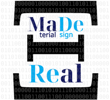Kong X. F.; Beyerlein Irene J.; Liu Z. R.; Yao B. N.; Legut Dominik; Germann Timothy Clark; Zhang Ruifeng. Stronger and more failure-resistant with three-dimensional serrated bimetal interfaces. Acta Materialia. 2019, vol. 166, s. 231-245. ISSN 1359-6454, eISSN 1873-2453, DOI: http://doi.org/10.1016/j.actamat.2018.12.051.
The article published in Acta Materialia 2019, vol. 166, p. 231-245 is a comprehensive state-of-the-art study of the current status of knowledge of a new interface engineering strategy for designing atomically serrated interfaces to improve mechanical strength and hinder localization and creep of metallic nanomaterials. By using atomic-scale simulation and interface defect theory and considering two bimetal systems, we show that high-energy interfaces can achieve a local, low-energy state by forming atomic-scale serrations and that the predicted size and location of the serrations are consistent with experimental observation. For several distinct strain states, we reveal that interfaces with atomic-scale serrations bear both higher barriers for dislocation nucleation and higher resistances to interfacial shear compared to their planar interface variants. This desirable combination is not a characteristic of the more commonly studied low-energy interfaces, which typically possess a high nucleation barrier and low sliding resistance. We explain, through an analysis of the misfit dislocation structure, that the serrations alter the number of dislocations emitted, change the favorable slip systems, and alleviate the stress concentrations generated by misfit dislocations. These results motivate a general strategy for designing an atomically serrated interface, in which the faces of the serrations correspond to low-energy, compact planes.
